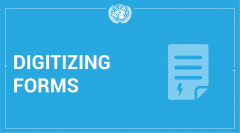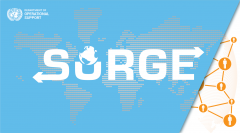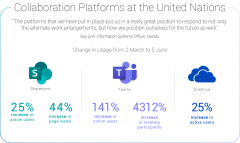The Secretary-General has signed the first statement on internal control for all operations of the Secretariat for 2020, marking an important milestone towards achieving greater accountability for results. The statement on internal control is a public accountability document that provides reasonable assurance that the Secretariat operated under an effective system of internal control during 2020. This is a very important step towards a more systematic approach to managing control and risk as well as to increasing the effectiveness of the Secretariat.
The Financial Policy and Internal Control Service, in the Department of Management Strategy, Policy and Compliance, led a major effort to document all high-level controls across the Secretariat, or risk control matrices, and review process flowcharts in functional areas. Every entity in the Secretariat contributed to this change, to strengthen the internal control framework; each one of them did an internal control self-assessment to review the effectiveness of their internal controls, based on very detailed activity-level and entity-level controls. These entity assessments, and a collective review of their assessments, formed the basis for the Secretary-General’s statement on internal controls, now available publicly on the reform’s website: reform.un.org
This first Statement is the culmination of many years of specialized work, triggered by the adoption of the International Public Sector Accounting Standards (IPSAS). While it had its genesis in financial reporting, the scope of the Secretariat’s Statement, which is based on the COSO Internal Control-Integrated Framework, was amplified to embrace operational and compliance objectives also. This was done to leverage this project as an enabler of the Secretary-General’s management reform, especially the delegation of authority, and the commitment to transparency and accountability for results. The internal control framework will be reviewed and updated continuously. Each year’s statement on internal control will reflect on the specific areas that are identified as opportunities for improvement.
The 2020 Statement has identified the following areas for further improvement: talent acquisition processes; learning skills and development; personal data protection and privacy; property management; maintenance of risk registers; advance purchase of air travel tickets; and monitoring, evaluation, and oversight of third parties.
As we strive to improve the Secretariat’s effectiveness in delivering on its mandates, the annual SIC framework will hopefully become an integral part of the manager’s toolkit in ensuring the optimal utilization of resources for delivering their respective programmes, and increasing trust in, and confidence about, the Organization.
For more information on this initiative, please contact Ms. Sandra Canales Ruiz at canales@un.org.




